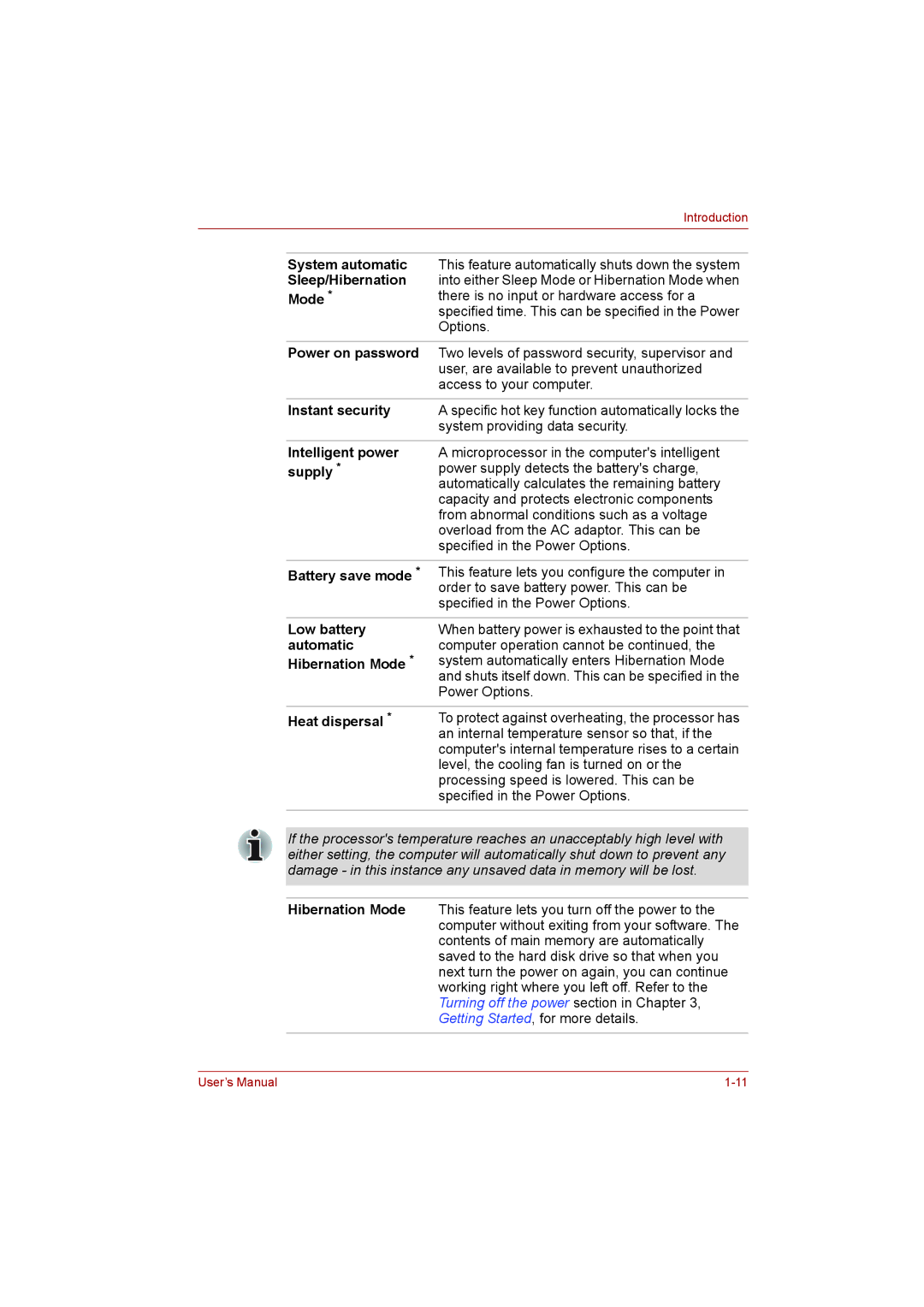
Introduction
System automatic Sleep/Hibernation
Mode *
This feature automatically shuts down the system into either Sleep Mode or Hibernation Mode when there is no input or hardware access for a specified time. This can be specified in the Power Options.
Power on password | Two levels of password security, supervisor and |
| user, are available to prevent unauthorized |
| access to your computer. |
|
|
Instant security | A specific hot key function automatically locks the |
| system providing data security. |
Intelligent power supply *
A microprocessor in the computer's intelligent power supply detects the battery's charge, automatically calculates the remaining battery capacity and protects electronic components from abnormal conditions such as a voltage overload from the AC adaptor. This can be specified in the Power Options.
Battery save mode * This feature lets you configure the computer in order to save battery power. This can be specified in the Power Options.
Low battery automatic
Hibernation Mode *
When battery power is exhausted to the point that computer operation cannot be continued, the system automatically enters Hibernation Mode and shuts itself down. This can be specified in the Power Options.
Heat dispersal * | To protect against overheating, the processor has |
| an internal temperature sensor so that, if the |
| computer's internal temperature rises to a certain |
| level, the cooling fan is turned on or the |
| processing speed is lowered. This can be |
| specified in the Power Options. |
|
|
If the processor's temperature reaches an unacceptably high level with either setting, the computer will automatically shut down to prevent any damage - in this instance any unsaved data in memory will be lost.
Hibernation Mode This feature lets you turn off the power to the computer without exiting from your software. The contents of main memory are automatically saved to the hard disk drive so that when you next turn the power on again, you can continue working right where you left off. Refer to the Turning off the power section in Chapter 3, Getting Started, for more details.
User’s Manual |
